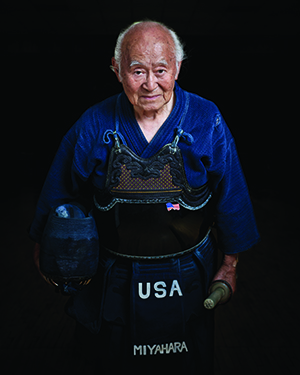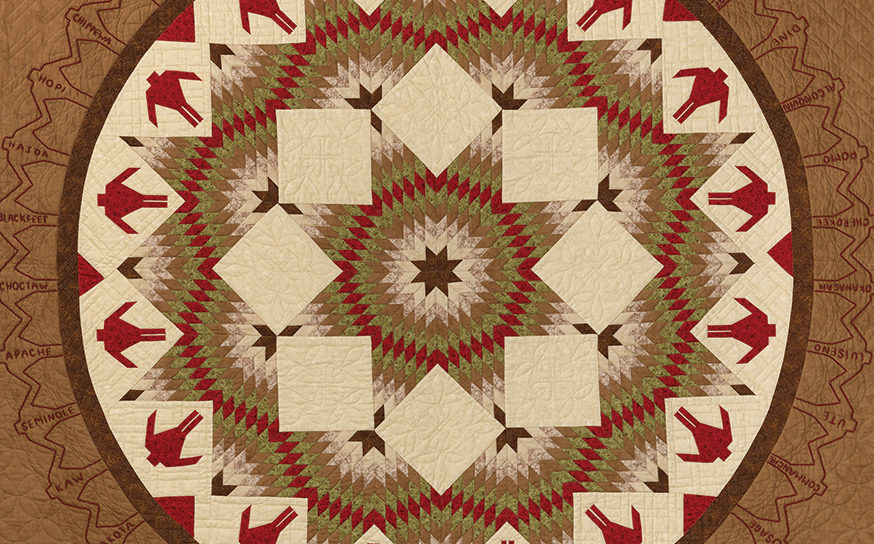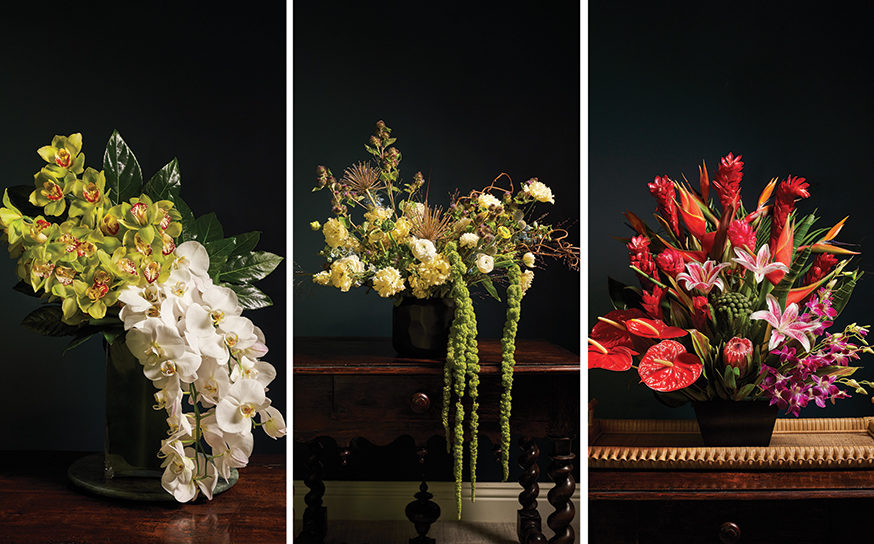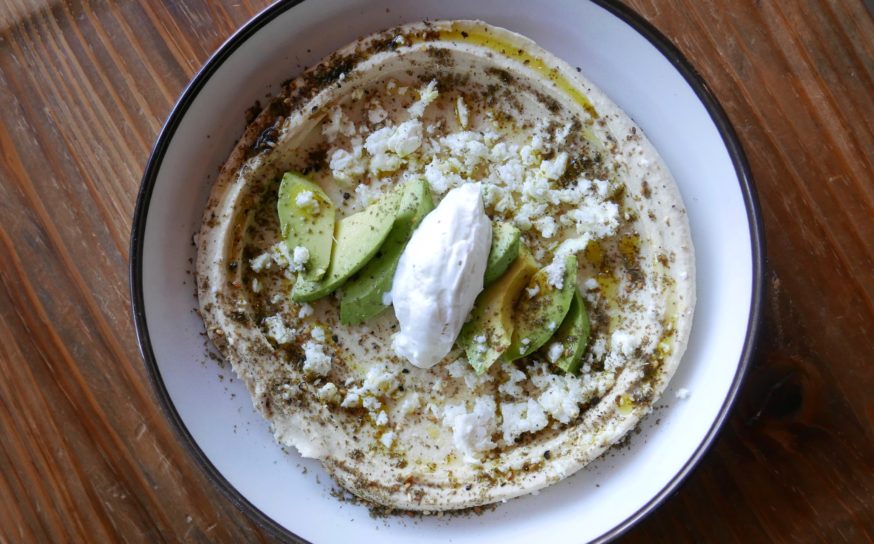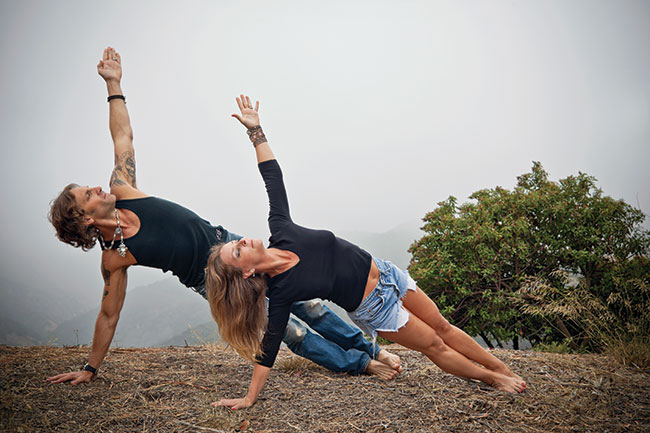
Living Well
As we ease into autumn, we share a breath of fresh air. For this issue, a celebration of health and wellness, we combed the 818 in search of people who personify good living. Here, we raise a glass (of organic pomegranate juice) to them. From the martial arts to the culinary arts, these seven individuals are robust, dynamic examples of what it means to live with vigor.
-
CategoryUncategorized
-
Written byRachel Heller •
Eric & Lisa Paskel
The Wild Road to Om
Frog pose, everybody,” Lisa Paskel calls out over the room full of sweating, grunting yogis. “And remember, no prince or princess is coming to kiss you and make you human. You have to do that work yourself.”
A few students laugh, but for Lisa and husband Eric, the sentiment is serious. The couple, owners of the successful Yoga Shelter chain, turned to the ancient discipline two decades ago to transcend alcohol and drug addiction. At their bustling Studio City location—where 30 to 50 pupils regularly cram inside for class—the Paskels espouse a demanding, edgy brand of yoga marked by tough love and an ample dose of expletives.
Yoga Shelter’s unorthodox approach is somewhat controversial on the local scene. Against a soundtrack of mainstream hip hop and rock tunes, their “Yoga Rocks” class features an energetic, anything-goes environment that might include singing, dancing and old-fashioned push-ups between asanas. Yet the punishing workout is cathartic, the Paskels say.
“Things in life that feel good a lot of the time aren’t good for us,” says Eric, 43. “We have to recognize the strength, the power, the beauty and health that can come from hard work and some discomfort.”
A crack cocaine addict through most of his teenage years, Eric was kicked out of two high schools and homeless for a time until he sought treatment a month before he turned 18. He and Lisa, also an addict, went to therapy together and forged a life of sobriety bolstered by the
transformative, healing power of yoga.
The Encino couple opened their first Yoga Shelter location in 2004. They now run six studios and continue to draw strength from the introspective practice to fight their demons.
“We don’t pretend to be perfect yogis,” says Lisa, 45. “We f*** up a lot. We don’t stand on a pedestal. We just come in and keep it real.”
 Henry McNamara
Henry McNamara
Water Boy
If Henry McNamara isn’t answering his phone, it’s probably because he’s in some form of water. He might be at one of his twice-daily water polo practices or lost in the curl of a crisp wave on a beach anywhere from Newport Beach to Malibu. “I’m in the water a lot of the time,” McNamara, 17, says modestly.
The easygoing high school junior has already made a name for himself on the local and national water polo circuits. As a member of the U.S. Men’s Youth National Team, he competed in the UANA Pan-American Championships in Puerto Rico this past summer, where his team cinched the silver medal and a spot at the Youth World Championships next year. And with his longtime local team, the Los Angeles Water Polo Club, McNamara has competed in the Junior Olympics every summer since third grade. He helped capture the bronze medal in his age division the past two years.
Next, McNamara hopes to take his passion for this grueling sport all the way to the Olympics.
Water polo runs in the genes of McNamara’s Encino family. His older brother, James, and his younger brother, Patrick, also play competitively. The three brothers also like to surf—really like it. When McNamara is not in class or in the pool, he’s usually in the ocean. He heads to the beach after practice, on weekends, at the crack of dawn and even between classes sometimes.
Six feet tall, tan and lean, with a blond shock of hair bleached white by sun and chlorine, McNamara is a man of few words when asked to analyze his competitive nature. How does he feel, plunging into the Pacific, riding waves of adrenaline and brine, pitting his strength against the tides, diving and twisting in the waves? His answer is telling: “I feel normal.”
 Rachel Carr
Rachel Carr
Kale and Compassion
For Rachel Carr, nothing says, “I love you” like a spirulina-protein shake. The custom-formulated, vibrant green beverage—a blend of spirulina, leafy kale, banana and apple—is intended to pack an invigorating energy punch that sustains and nourishes the body long after the last sip. What better way for this health-conscious chef to show her customers she cares?
“I’ve always had a strong desire to help people through food,” says Carr, 39, executive chef at SunCafé in Studio City.
Since arriving at SunCafé (formerly known as SunPower Natural Café) earlier this year, Carr has put her unique spin on the menu of this popular raw and vegan restaurant, vaunted for its flavorful kale salad, raw pad thai with kelp noodles and raw pesto pizza with vegan cashew cheese.
“I like the challenge of taking a dish like pad thai or french toast and making it raw or vegan,” says the blonde, slender mid-west native, who sticks to a vegan diet that’s 85% raw. “Raw food contains all of its original nutrients—it has not been compromised in any way. You’re getting food at its highest nutritional value.”
Eating and empathy have always gone hand-in-hand for Carr. She first went raw seven years ago to support a friend who adopted the lifestyle to lose weight. As a teenager, she learned the ropes of vegan cuisine to help keep her stepmother healthy after she was diagnosed with breast cancer. Cooking meals for her family from seaweed, pumpkin and brown rice, Carr honed her passion for healing through a plant-based diet rich in palate-pleasing herbs.
Prior to her Valley debut, Carr spent four years as head chef at CRU restaurant in Silver Lake. Now she has transformed SunCafé into a hub for healthy living, offering smoothie detox programs and weekly vegan cooking classes.
Yet even this raw food role model harbors one unhealthy vice: coffee. Organic, of course.
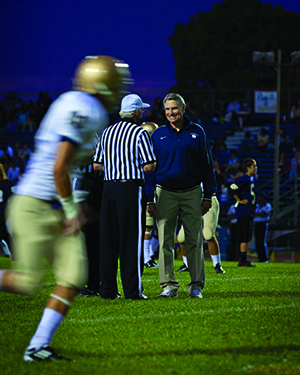 Kevin Rooney
Kevin Rooney
Consummate Coach
Kevin Rooney squints, gazing across the football field as his players get into formation. The Notre Dame High School varsity team is up seven points, but their opponents are slowly making their way to the end zone. “Let’s go, defense!” Rooney bellows. Yet the silver-haired coach still smiles, Zen-like, amid the row of gold helmets on Notre Dame’s sideline.
Maybe that smile signifies confidence in his team’s lead—or possibly it bespeaks the fact that after 30 years of coaching, Rooney knows his students are absorbing life lessons beyond how to catch passes and kick field goals.
Rooney has been athletic director and head football coach at the Sherman Oaks school since 1980, leading the Knights on an impressive rise to prominence. Notre Dame has won 14 league championships and four CIF championships in the last 18 years. The 2002 and 2004 teams went undefeated, with the latter ranked 11th in the nation. Rooney himself has garnered a heap of “coach of the year” honors for a strategy grounded in hard work and discipline.
“We teach a strong work ethic,” says Rooney, 61. “Everyone has so much God-given talent, but your sportsmanship and how hard you train has nothing to do with that. The harder players prepare, the better the team is going to be, regardless of talent.”
Part of that training involves a year-round emphasis on weight lifting, cardiovascular conditioning and nutrition. Rooney sets a solid example, to be sure. During football season, he personally hits the gym at 5 a.m. on weekdays so he can be at school for a 6:30 a.m. lift session with his team.
The idea, Rooney says, is to instill in students a love of fitness and “lifelong habits” that will keep them in top shape past graduation. Has his quiet dedication made as much of an impact on his three grown daughters? “Hopefully,” he says with a chuckle.
Maki Miyahara
Legendary Sensei
Maki Miyahara has trouble remembering exactly which year he retired as an engineer. Yet he can instantly recite the angle of every ceremonial bow practiced in Kendo: 45 degrees when entering or leaving the dojo, 16 degrees when facing an opponent.
“Everything has to be just so in Kendo,” Miyahara, 90, explains. “You have to be sharp.”
When it comes to Kendo, the art of Japanese sword fighting, no one is sharper than this compact powerhouse with a commanding growl. Miyahara sensei, as he is known to his students, holds the rare and elite title of Hanshi 8-dan, the highest attainable rank in this strenuous martial art. Having practiced Kendo for nearly 80 years, he is the top-ranking instructor in the U.S.
Miyahara still teaches twice a week at the San Fernando Valley Kendo Dojo, which he founded in 1967. Even at 90, he lopes lightly on his toes as he guides students through a discipline steeped in centuries of tradition.
Born in Montebello, Miyahara began learning Kendo from his father at age 11. He worked as a mechanical engineer until the 1970s, but five nights each week, he donned his hakama (pants), bōgu (armor) and men (helmet) and trained students at dojos across the southland.
Ask Miyahara the secret to his long, healthy life, and he gives an enigmatic smile. A balanced diet isn’t the answer—Miyahara admits having a “healthy appetite” for steak, and as soon as practice ends at 9:30 p.m. he cracks open a beer.
Instead, all signs point to Kendo. Youthful strength and speed can only get students so far as they spar with bamboo swords—the rest of the sport is about patience, anticipation and reaction. Train your reflexes, the thinking goes, and you’ll train your body to defy the limits of age.
Miyahara’s mantra is simple:
“Keep moving–it’ll keep you young!”
Adam Parson
Choreographer by Calling
Adam Parson likes to describe himself in terms of vitality: “Age 44, look 28, feel 16.”
Perhaps the exuberant dancer and choreographer feels young because he came late to his chosen discipline. “I was a computer nerd until age 26. Then I found dance,” says the Nairobi, Kenya native, who moved to the U.S. as a teenager. “Dancing is an amazing stress-reliever, energy-booster, pick-me-up—whatever you want it to be.”
For Parson, it has also been a path to worldwide recognition. As artistic director of the Commonality Dance Company and a resident teacher at Edge Performing Arts Center in Hollywood, Parson has become a sought-after choreographer of everything from jazz to hip-hop to expressive lyrical. He has choreographed for So You Think You Can Dance–Australia and created numbers for the prima ballerinas of the Seoul National Ballet and the Ballet Folklorico de Mexico. His television and video credits include Power Rangers, Prince and Monica.
Parson teaches master classes for dance companies and schools around the world, savoring every chance to pass on lessons he’s learned from his profession. “I am privileged to be able to work with children from time to time and help them see how dance can not only help with exercise but give them skills in discipline in their academics,” says Parson, who lost almost 80 pounds when he began dancing.
When he’s not overseas—or over the hill—this Studio City resident guest teaches at nearby Hama Dance Center and hits up his favorite local haunts like Aroma Café and Big Sugar Bakeshop. Don’t bother looking for evidence of his confectionery weakness, however—his svelte figure doesn’t betray a crumb.





